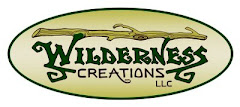One of the added challenges of working with old, weathered wood, compared to new lumber, is what to do with the areas that you have cut. Sometimes you can work your design to fit the size of the boards (assuming you have that design freedom) but you will always need to make some cuts of the barn wood. There are multiple ways you can approach this challenge and on some projects you may use several of these methods.
The border on the the piece above uses 45 degree cuts which leaves all of the outside, visible edge being the weathered wood. If you had a solid barn wood top then you could use this method and cover the cuts of the inside top boards.
Another way to approach this is to use "bread board ends" which utilizes a thinner piece of your matching wood to cover the cut ends. So, you could make your top with as many boards as you need (depending on the size of the table) and then cut a strip off of another matching aged board to cover your two ends that have the exposed wood. On the drawer above I used some very thin strips (around 1/2") to cover the cut ends. Thoroughly glue and nail the ends on for a secure attachment. It makes for a very nice, finished look.
There also will be times, when working with barn wood, that you may need to cover a spot with some stain to match. You want to minimize this if possible because it just doesn't work as well and feels a bit less authentic. But, if you need to cover some ends, take your time in matching the color and feel of the wood. Practice on matching wood scraps to get your color and methods as close as possible. You don't want to put stain on too thick, I find that lightly rubbing the stain in with a cloth works nicely.
Other hints for working with barn wood furniture:
If you just want to bring down some sharp edges on corners or tops, you can use a small hammer and dent them in. I like this method since the wood is already distressed and that is the look you are going for anyway. Just tap it until you have softened the edge to the desired point, this way it keeps it's matching weathered look and you do not need to worry about it standing out from sanding through the aged layers.
Be careful to remove the worst of the splinter areas. You don't want anyone picking up a splinter or catching clothes on the wood, etc… Go over the whole project and check for spots that may be a problem and then (if you want this look) add a clear finish to the furniture. Think about the look you want and go with the sheen that best fits that, and remember that each coat will add to the sheen. The finish helps to lock in small splinters and loose wood while also making the piece easier to clean. The extra protection will cut down on stains and scrapes that may get through the aged layer of wood.
I hope these little suggestions help, please feel free to email me with further questions or if any clarifying of topics is needed. Mark@RusticFurnitureGallery.com
603-563-7010 Visit us online at: www.RusticFurnitureGallery.com











No comments:
Post a Comment